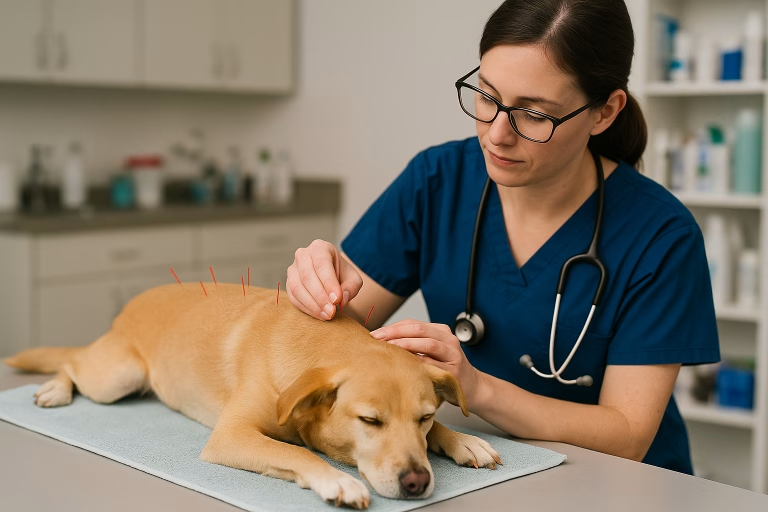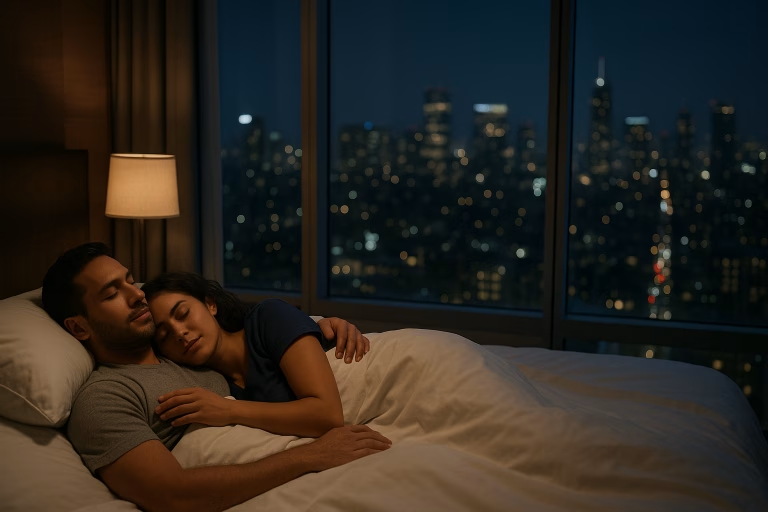
Mosquitoes and ticks are more than just annoying—they can carry serious diseases such as Lyme disease, West Nile virus, and Zika. As climate change expands their habitats, protecting yourself with a reliable insect repellent is more important than ever. This guide covers the 10 best insect repellents for 2025, including natural and DEET-free options recommended by pharmacists.
Why Insect Repellents Matter
Mosquitoes and ticks are vectors for various illnesses. They thrive in humid, grassy, and wooded environments. Using insect repellent helps create a protective barrier, reducing your risk of insect bites and the diseases they carry.
If you’ve ever been outside during the warmer months, you know the struggle: mosquitoes buzzing around your ears and ticks hiding in the grass, waiting to latch onto your skin. But these bugs aren’t just a nuisance—they can carry dangerous diseases like:
- Lyme disease (from ticks)
- West Nile virus and Zika (from mosquitoes)
- Rocky Mountain spotted fever
- Chikungunya and dengue fever
As global temperatures rise and rainy seasons stretch longer, the reach of these insects is expanding into new regions—making insect protection more essential than ever.
That’s where insect repellents come in. Whether you’re hiking, camping, working outdoors, or just enjoying your backyard, using a high-quality insect repellent can dramatically reduce your risk of bug bites and serious infections.
In this guide, we’ve reviewed the 10 best insect repellents of 2025—including natural, long-lasting, and DEET-free options. From pharmacist-recommended favorites to eco-conscious sprays, we’ll help you find the right one based on how they work, their ingredients, pros and cons, and key tips for safe and effective use.
🦟 What Attracts Mosquitoes and Ticks? Common Causes of Bug Bites
Before choosing the best insect repellent, it’s important to understand what attracts mosquitoes and ticks in the first place. Knowing the causes can help you prevent bites even before reaching for your bug spray.
Here are the most common reasons these pests are drawn to humans:
🦟 Mosquitoes are attracted to:
- Body heat and sweat – They can sense warmth and lactic acid on your skin.
- Carbon dioxide (CO₂) – You exhale it when you breathe, and mosquitoes can detect it from up to 100 feet away.
- Dark-colored clothing – Mosquitoes are more attracted to dark blues and blacks.
- Standing water nearby – This is where they lay eggs and breed.
- Floral-scented lotions or perfumes – These mimic the smell of nectar, a food source for mosquitoes.
🕷️ Ticks are commonly found in:
- Grassy or wooded areas – Especially in tall grass, leaf litter, and shrubs.
- Animal hosts – Pets or wildlife like deer and rodents carry ticks.
- Moist, shaded environments – Ticks need humidity to survive.
- Bare skin contact – Ticks grab onto exposed skin when you brush against vegetation.
🚨 Common Symptoms of Mosquito and Tick Bites: What to Watch For
Bug bites can be more than itchy annoyances—they sometimes signal a potential infection or allergic reaction. Recognizing the symptoms early helps you know when to treat at home and when to seek medical attention.
Here are the most common symptoms of mosquito and tick bites:
🦟 Mosquito Bite Symptoms:
- Red, itchy bump – Often appears within minutes after a bite
- Swelling around the area – Especially common in children or sensitive skin
- Warmth or tenderness – Mild inflammation is normal
- Small blisters or bruising – In more severe reactions
- Fatigue or fever – May indicate a mosquito-borne illness (e.g., West Nile, dengue)
🕷️ Tick Bite Symptoms:
- Small red bump – Often painless and may go unnoticed
- Rash (bullseye pattern) – Classic sign of Lyme disease (develops 3–30 days after bite)
- Fever, chills, or body aches – Possible signs of a tick-borne illness
- Joint pain or fatigue – Can indicate Lyme or other tick-related infections
- Headache or stiff neck – Needs immediate attention, especially if paired with fever
✅ Tip: Always check your body (and pets!) after spending time outdoors—especially in grassy or wooded areas.
How Insect Repellents Work
Active ingredients in repellents interfere with the insect’s ability to detect humans:
- DEET: Masks human scent, confusing mosquitoes.
- Picaridin: Mimics natural compounds that insects avoid.
- Oil of Lemon Eucalyptus (OLE): Natural ingredient that repels mosquitoes.
- IR3535: Effective against multiple biting insects.
- Essential Oils: Like citronella, lavender, and peppermint, used in natural formulas.
Comparison Guide: Top 10 Insect Repellents in 2025
1. Sawyer Products Picaridin Insect Repellent (20%) – Pharmacist Recommended #1
- Active Ingredient: Picaridin 20%
- Duration: Up to 12 hours
- Type: Spray or lotion
How it works: Picaridin mimics piperine, a compound found in pepper plants, making it extremely repellent to insects. It blocks the insect’s olfactory receptors, so they can’t detect skin scent.
Pros:
- Long-lasting protection
- Non-greasy
- Safe for the whole family
Cons:
- Slightly more expensive
Side Effects:
- Rare mild skin irritation
Counseling Tips:
- Apply evenly on exposed skin. Safe for children 2+. Avoid eyes and mouth. Reapply after swimming or excessive sweating.
#insectrepellent #picaridin #pharmacistapproved
2. OFF! Deep Woods Insect Repellent VIII
- Active Ingredient: DEET 25%
- Duration: Up to 8 hours
How it works: DEET confuses insects by masking the natural human scents that attract them. It has been a gold standard since the 1950s.
Pros:
- Strong protection in forested areas
- Readily available
Cons:
- Strong smell
- Not suitable for infants
Side Effects:
- Potential skin irritation
- Rare neurological symptoms if overused or ingested
Counseling Tips:
- Apply to clothes and exposed skin. Wash off after coming indoors. Do not use under clothing or on broken skin.
#DEETrepellent #deepwoods
3. Repel Lemon Eucalyptus Insect Repellent
- Active Ingredient: Oil of Lemon Eucalyptus (30%)
- Duration: Up to 6 hours
How it works: Derived from the lemon eucalyptus tree, OLE contains PMD (para-menthane-3,8-diol), a compound effective at repelling mosquitoes.
Pros:
- Plant-based
- Pleasant scent
Cons:
- Not for kids under 3
Side Effects:
- Potential for eye irritation or mild rash in sensitive users
Counseling Tips:
- Ideal for eco-conscious users. Reapply every 4–6 hours. Avoid using on hands of small children.
#naturalrepellent #lemonEucalyptus
4. Natrapel Insect Repellent
- Active Ingredient: Picaridin 20%
- Duration: Up to 12 hours
How it works: Picaridin offers strong mosquito and tick repellent effects without the greasy feel of DEET. It is odorless and safe on gear.
Pros:
- TSA-friendly size
- Non-oily
Cons:
- Slight white residue when applied
Side Effects:
- Minimal, but rare dryness or irritation
Counseling Tips:
- Great for travelers. Apply to hands first before applying to face.
#Natrapel #travelessential
5. Murphy’s Naturals Lemon Eucalyptus Oil Spray
- Active Ingredient: OLE 30%
- Duration: 6 hours
How it works: Natural lemon eucalyptus oil repels insects with PMD, a proven bioactive compound that functions similarly to DEET.
Pros:
- DEET-free
- Eco-friendly packaging
Cons:
- Can irritate sensitive skin
Side Effects:
- Skin stinging or redness, especially on broken skin
Counseling Tips:
- Patch test before full application. Do not use on infants. Reapply after 4–6 hours.
#MurphysNaturals #ecoRepellent
6. Ranger Ready Picaridin Lotion
- Active Ingredient: Picaridin 20%
- Duration: 12 hours
How it works: The lotion format ensures even coverage, with a skin-conditioning base that minimizes dryness while providing effective insect protection.
Pros:
- Fragrance options
- Skin-conditioning formula
Cons:
- Requires handwashing after application
Side Effects:
- Rare allergic reactions to added scents
Counseling Tips:
- Use for long outdoor exposure. Wash hands thoroughly before touching face.
#RangerReady #picardinlotion
7. Badger Anti-Bug Shake & Spray
- Active Ingredients: Citronella, rosemary, and lemongrass oils
- Duration: 3–4 hours
How it works: Combines essential oils that overwhelm mosquito receptors and make human scent harder to detect.
Pros:
- USDA Organic
- Kid-friendly
Cons:
- Requires frequent reapplication
Side Effects:
- Possible allergic skin reactions
Counseling Tips:
- Ideal for short-term outdoor activities. Reapply every 2–3 hours. Shake well before each use.
#organicrepellent #BadgerAntiBug
8. Cutter Backwoods Dry Insect Repellent
- Active Ingredient: DEET 25%
- Duration: Up to 10 hours
How it works: DEET blocks mosquito and tick olfactory receptors. The dry spray leaves no oily residue, making it great for hot climates.
Pros:
- Dry formula
- Sweat-resistant
Cons:
- Not eco-friendly
Side Effects:
- May cause skin dryness or respiratory irritation if inhaled
Counseling Tips:
- Use in well-ventilated areas. Do not apply on face. Safe for adults and older children.
#CutterRepellent #backwoods
9. Avon Skin So Soft Bug Guard Plus IR3535
- Active Ingredient: IR3535 10%
- Duration: 8 hours
How it works: IR3535 is a synthetic amino acid that repels insects without toxicity, often combined with SPF for dual protection.
Pros:
- Skin-soothing
- Sunscreen combo available
Cons:
- Fragrance may not appeal to all
Side Effects:
- Mild eye or skin irritation
Counseling Tips:
- Ideal for mild environments. Works well for kids’ daily use. Avoid use around mucous membranes.
#AvonBugGuard #IR3535
10. All Terrain Herbal Armor Natural Insect Repellent
- Active Ingredients: Citronella, peppermint, cedar, lemongrass oils
- Duration: 2–3 hours
How it works: Essential oils form a sensory barrier that disrupts insect tracking behavior. Ideal for short-term natural protection.
Pros:
- 100% natural
- Family safe
Cons:
- Shorter duration
Side Effects:
- Possible stinging on sensitive skin or eyes
Counseling Tips:
- Apply liberally and reapply every 2 hours. Store in cool place to preserve oils.
#HerbalArmor #naturalinsectrepellent
🏥 When to See a Doctor for Mosquito or Tick Bites
While most bug bites are harmless and go away on their own, some can lead to serious infections or allergic reactions. Knowing when to seek medical attention can help you catch problems early and avoid complications.
Here are the warning signs that mean it’s time to see a doctor:
🚨 See a doctor if you experience:
- A bullseye-shaped rash – Could be a sign of Lyme disease from a tick bite
- Fever, chills, or muscle aches – Especially after a tick bite or travel to mosquito-prone areas
- Swelling that spreads or gets worse – May indicate infection or allergic reaction
- Pus or yellow discharge – Sign of a skin infection
- Shortness of breath or dizziness – Could mean a serious allergic reaction (anaphylaxis)
- Headache and stiff neck – May be related to a tick-borne illness like Lyme or Rocky Mountain spotted fever
- Bite that doesn’t heal after several days – Persistent irritation may need medical treatment
⚠️ Note: Tick bites can transmit disease even if the tick is removed quickly. Monitor symptoms for several weeks after a bite.
🌿 Lifestyle Tips to Prevent Bug Bites and Live Mosquito-Free
Avoiding mosquito and tick bites isn’t just about using repellent—it’s also about making smart lifestyle changes and creating an insect-resistant environment. These everyday habits can help you and your family enjoy the outdoors safely.
🏡 Home & Environment Tips:
- ✅ Eliminate standing water – Empty buckets, birdbaths, and plant trays weekly to stop mosquito breeding.
- ✅ Use screens on doors and windows – Keep bugs out while letting fresh air in.
- ✅ Keep grass and shrubs trimmed – Ticks thrive in tall grass and shady overgrowth.
- ✅ Install yellow outdoor lights – These are less attractive to insects than white bulbs.
👕 Personal Habits That Help:
- 👚 Wear light-colored, long-sleeved clothing – Mosquitoes are more attracted to dark colors and exposed skin.
- 🧴 Use unscented lotions and body wash – Perfumes and floral scents can attract mosquitoes.
- ⏰ Avoid outdoor activities during peak mosquito hours – Dusk and dawn are high-risk times.
- 🧢 Wear a hat and tuck in your pants – Especially important when hiking or walking through tall grass.
💡 Better Living, Less Biting:
- 🧘 Stay cool and sweat-free when possible—mosquitoes are drawn to body heat and lactic acid.
- 🧼 Keep skin clean and dry to reduce insect-attracting bacteria.
- 🐶 Use tick preventatives on pets—they can bring bugs indoors.
✅ Final Thoughts: Choosing the Right Insect Repellent in 2025
Insect bites might seem like a small inconvenience, but they can lead to serious health issues if not prevented properly. The good news? With the right insect repellent and smart lifestyle habits, you can enjoy the outdoors with confidence.
Here’s a quick recap to help you make the best choice:
🧴 When choosing an insect repellent, consider:
- ✅ Your environment – DEET or Picaridin for wooded areas; natural options for light exposure.
- ✅ Duration of protection – Look for products that last 6–12 hours if you’re outdoors for extended periods.
- ✅ Age and skin sensitivity – Choose DEET-free or essential oil-based repellents for kids or sensitive skin.
- ✅ Application type – Sprays are convenient; lotions offer longer, even coverage.
🧠 Smart usage = better protection:
- 💡 Reapply as directed, especially after sweating or swimming.
- 💧 Wash repellent off once you return indoors.
- 👶 Always follow age guidelines for children.
- 🧤 Apply to clothing when possible to reduce skin exposure.
🌿 Pair your repellent with prevention:
⏱️ Avoid peak mosquito times like early morning and dusk.
🏡 Keep your yard clean and dry.
👚 Cover up with the right clothing outdoors.
🐾 Protect pets with tick treatments.
Protect yourself and your loved ones with science-backed solutions.
For more information:
#bugspray #tickrepellent #DEETfree #naturalremedies #insectbiteprotection #healthtips2025
Easy to Copy & Paste to WordPress Use heading tags (H2, H3), insert internal links to related blog posts, and customize CTA buttons for user interaction.
Stay bite-free in 2025!









